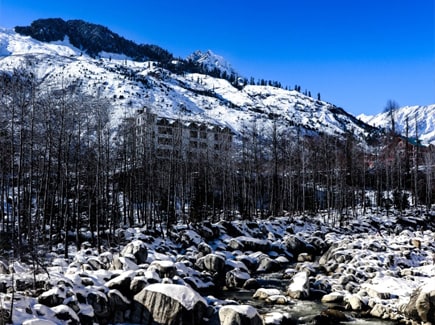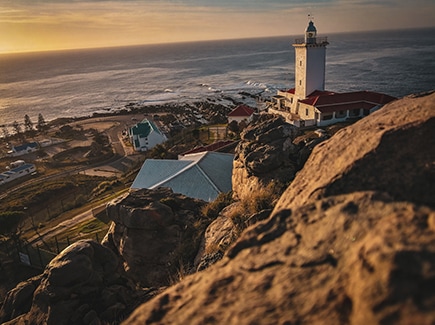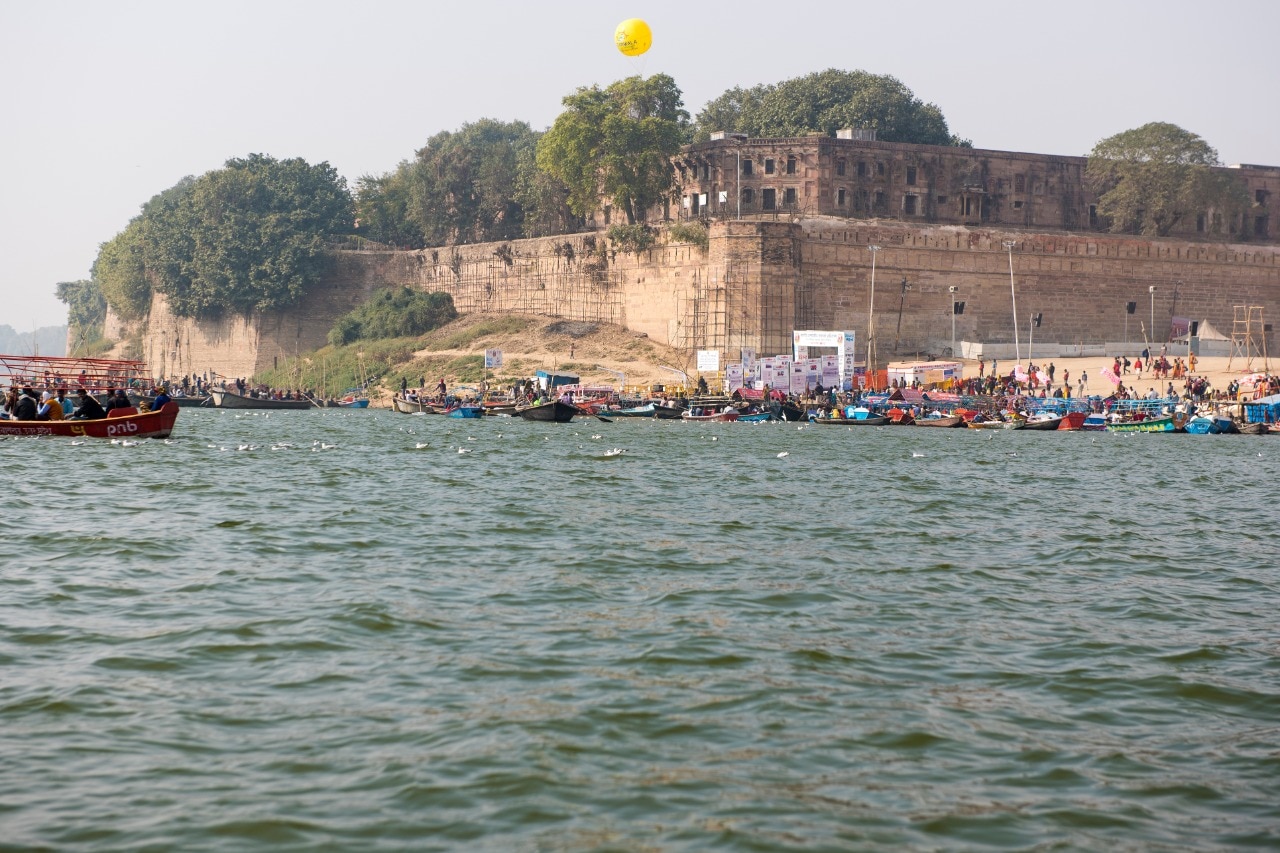Allahabad is a city with a history that can make other popular metropolitan areas blush with modesty. This is because it has been the oldest living city in the Indian subcontinent with stories that make tourists feel awe, horror, and proud all at the same time. While most people give Allahabad’s popularity to Triveni Sangam - the confluence of the Ganges, Yamuna, and Saraswati rivers, it is the Allahabad Fort that makes the city worth visiting. The sheer magnificence of this fortress can make you feel the grandeur of the Mughal Empire. Constructed in the sixteenth century by the modern-day favourite Emperor, Abu'l-Fath Jalal-ud-din Muhammad Akbar, Allahabad Fort still stands tall near the banks of Yamuna. In recent times, the city of Allahabad has been renamed Prayagraj, so the name of this monument is also to be considered as Prayagraj Fort in an official capacity. The locals who have a romantic connection with their city still refer to the original nomenclature. Allahabad city tour packages are available all year round with the Fort of Allahabad, Triveni Sangam, and several other places included in the itinerary. If you are planning to visit this ancient city, read this blog to know more about it:
History of the Fort
Much like any other Indian city, Allahabad has quite an interesting history. Considered to be a strategic location, it was constructed by Akbar the Great, in the sixteenth century as a solid base due to the confluence of three rivers nearby. The “City of Allaha” was originally known as Illahabas and gradually, Allahabad was the name that suited it the best. His orders to build the Fort of Allahabad was in line with the thought of making it a centre of religious and cultural importance. But the fate of the Mughal Empire was doomed as soon as the East India Company set its sights on the Indian subcontinent as the perfect cash cow. The history of Allahabad Fort now takes an unfortunate turn. Captured by the Company in 1801, the fort was ceded by Nawab of Oudh, Shah Alam to save his own life. This strengthened the hold of the British rule as they used the secret tunnel inside the Allahabad Fort to keep their military excursions active in the northern part of India. This city played a key role during the Indian Freedom Movement and became a centre of knowledge, debate, and discussion for the freedom fighters. Allahabad Fort was used as a military base by the British until India gained its independence. Currently, a majority part of the fort is used by the Indian Army as an Ordnance Depot.
Influence in its Architecture
Akbar’s vision of Allahabad Fort was centred around splendour and grandeur. He was focused on making this fort a sight that depicts the prowess of the Mughal Empire to the rest of the kingdoms in and around the Indian subcontinent. Knowing the inclusive nature of this Mughal Emperor, it is safe to say that the Allahabad Fort’s architecture is a mix of Persian, Mughal, and Hindu in the best way possible. While tourists can only visit certain parts of the fort while others as restricted by the military, its beauty can still be marvelled at without a doubt. It has three entryways which were constructed in such a way that no man or elephant could reach its top. All entry and exit points are adorned with Islamic and Hindu artwork. Another treasure inside the fort is the Jodhabai Palace that boosts marvellous Hindu architecture. The “chhatri”, circular dome structures, and glazed tiles depict the union of the Mughals and the Rajputs. Zenana and Marian-uz-Zamani, other wives of the Emperor also have palaces built inside this fort that depict rich Persian and Islamic architectural designs. The Ashoka Pillar was hoisted by Akbar as an added jewel to the crown. Dating back to 232 BC, this pillar has inscriptions from the Guptas, Mauryas, and early Mughal rule. Open to public viewing, you can see the 35-feet tall pillar on your next vacation to Allahabad. Prayagraj Fort’s most controversial regions are Akshayavat or “indestructible banyan tree” and Saraswati Koop, the origin of the Saraswati river. Several restrictions had been kept on these places of worship but now devotees are welcomed to pay their respects.
Things to do in Allahabad
Besides visiting Prayagraj Fort on your next vacation, there are several other things to do in Allahabad. Mentioned below are the top 5 places that you can explore in this city:
Triveni Sangam
One of the most popular places in Allahabad, this spot marks as the confluence of the Ganges, Yamuna, and Saraswati. Taking a bath here is said to wash away your sins. The most exciting time to visit Triveni Sangam is during the Kumbh Mela (once in 12 years) and the Ardh Mela (once in 6 years) when the entire area is buzzing with activities, religious prayers, and the like.
Allahabad Museum
Renowned for its artefacts, this museum is a must-visit place for tourists with a keen interest in the history of Allahabad. Located inside the Chandrashekhar Azar Park or Company Bagh, it is one of the most well-maintained museums in the country with solar power being used to generate electricity within the premises. Allahabad Museum is open between 10.30 am to 4.30 pm every day except Monday when it is closed to the public.
Anand Bhavan
While travelling around the city, you will come across a museum that used to be the ancestral home of the Nehru family. Anand Bhavan is a beautiful property that is said to be preserved in its original state with no significant changes made since its construction. Learning about the rich history of the Nehrus can be done at this museum. Fun fact: there is a small room inside the erstwhile residence where Mahatma Gandhi used to stay during his visits to Allahabad. Anand Bhavan is open between 9.30 am and 5 pm every day.
Khusro Bagh
If you wish to take a crash course in Emperor Shah Jahan’s family history, then this particular garden is just the place for you! The four-walled garden is spread across 40 acres of lush green land with three tombs for Prince Khusro, Emperor Jahangir’s eldest son and Sultan Begam, also known as Aqa Reza, his principal court artist, and Nithar, Prince Khusro’s sister. Islamic architecture’s finest designs can be found at these tombs that are open to public viewing between 5 am to 7 pm all days of the week.
All Saints Cathedral
A gothic-style Church in the middle of Allahabad is something that you would least expect to find. Yet, this city is always surprising its visitors with unique places and monuments. Built by stones, this church is famous for its carvings, archways, and glass-stained windows set inside the main hall. Colloquially called Patthar Girja (Church of Stones), it is situated at the junction of MG Road and SN Road. Visitors can pay their respects from 8.30 am to 5.30 pm every day without paying any entry charges.
Best Time to Visit Allahabad Fort
Allahabad as a city should be visited during the winter season. The months between October and March is ideal for sightseeing as the weather conditions are cool and pleasant. Allahabad Fort restricts entry during the monsoon season, so it is advisable to plan your trip accordingly. Another option is to visit Prayagraj Fort during the Magh Mela, generally organised anytime between January and March. The timings of the Allahabad Fort are 7 am to 6 pm every day and no entry fee is charged. As travel restrictions are lifting, it is still advised to carry a sanitiser and wear a mask while visiting public spaces.
Aren’t you craving for a vacation in Allahabad already? Plan your trip right away and explore this city’s treasures with your loved ones.












































Post your Comment
Please let us know your thoughts on this story by leaving a comment.